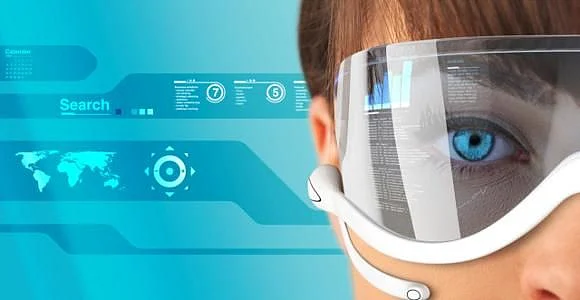Futurologists: We can see the future
They can see the future and they do not even need a crystal ball

The detractors, however, are shouting halt at a juggernaut; the proverbial horse has already bolted, and this particular beast is being powered by rocket fuel. Because what Google’s plasticky eyewear really represents is merely the teeniest, tiniest tip of the iceberg; the start of a trend that will gather momentum at an exponential rate. Alarmists point out that wearers of Google Glass can make use of an application that lets them take a candid photo simply by winking. The horror!
It will change your life in a far more dramatic fashion than the internet has done over the past two decades.
The people who really understand what Google Glass heralds are a small band of men and women known as futurists, or futurologists, and by joining up the dots of what we know today with what they think we’ll know in the future, they are able to predict just where technology is going with a reported accuracy of around 80 per cent.
They foresaw the iPhone, they knew drones would steadily replace ground strikes, and they certainly know that in the not-too-distant future, you won’t have to wear a set of Google-branded goggles if you want to take secret photos. From personal technology to fuel; from outer space to education, these guys know where it’s at.
Two of the world’s most respected futurists are Ray Hammond, arguably Europe’s most widely published futurist who was honoured by Mikhail Gorbachev with a UN gold medal for services to futurology, and Dr Ian Pearson, founder of the company Futurizon and author of multiple books.
They take us on a whistle-stop tour of tomorrow...
Mobile phones
“Think of assorted little items around the body,” says Ray. “On our wrists, in our ears, on our belts and microphones on our collars. They become a body network, and will look after everything, from our health to our finances, and all of our communications.”
The contact lenses would also serve as TV and cinema screens, adds Ray, making ‘home entertainment’ as we know it utterly redundant. “Your entertainment goes wherever you are.”
We’ll see these lenses in just a few years, prototypes at first, used for measuring blood sugar levels and with other medical applications.
Appearance
Chanel and Louis Vuitton might be looking two or three seasons ahead, but our futurists think they know what we’ll be wearing decades from now, and the answer is ‘whatever you want people to think you’re wearing’.
Dr Ian Pearson explains, “As augmented reality comes into play, you’ll soon be able to start making your appearance more and more virtual.”
He says we’ll each have a ‘digital aura’, so passers-by who are wearing retinal-projection contact lenses will not so much see you but the avatar you’ve created for yourself. “It’s a digital bubble, showing your Facebook profile, what you’re into, whether you’re single – whatever you like.”
He also argues that one of the biggest battles in tech in the coming decades will be the one over who gets to control what you see through these retinal-projection lenses. Will it be possible to walk down a high street and see just directions – or will the bombardment from advertisers be part of the deal that we will simply have to accept?
Housing
Housing is a basic human need, and as such Ray Hammond sees little change in the actual structure of our homes. 3D printing technology – imagine a giant 3D printer on a gantry, fed by concrete – will start to creep into construction, but beyond that the styles of housing aren’t likely to change much, though insulation (and, in return less energy waste) will become ever more important.
We’re already witnessing the ‘brainification’ of our homes. But far more than a fridge that knows when you’ve run out of butter or the milk is near its sell-by date, your whole house will soon be “an intelligent shell communicating with components all the time for our benefit and safety”.
Transport
There are a few worries about self-driving cars,” says Ray Hammond, “because if someone is killed, who’s liable? Even so, it’s definitely going to happen and in 25 years, on many major roads in developed cities, the cars will be self-driving.”
Dr Ian Pearson concurs: “All the big manufacturers are working on this – you can expect the first on the roads in 10 years. They could be powered by inductive pick-ups from under the road surface, a bit like Scalextric. Once we start to see this technology – in cities, initially – it will take off very rapidly.”
That’s more than can be said for advances in air travel: neither futurist sees any dramatic developments there in the next few decades, although growing affluence in China, India and other emerging countries will, says Ian, lead to record tourist numbers at the world’s most popular hotspots. “Eventually, they’ll simply have to put limits on visitor numbers,” he says, stating that a major travel trend in the coming decades will be virtual visits, which will be the only way many people ever get to see certain parts of the world.
Education
Nor does Ray see much of a revolution in the classroom, for younger children especially. “I think that under the age of 13 or so, children learn through relationships with teachers and with each other in the classroom, so I’m certain that’s not going to change.”
Nothing to see here, then, unless you were considering investing in a company that promised to hook kids up to iPads and do away with teachers.
Sign up for the Daily Briefing
Get the latest news and updates straight to your inbox
Network Links
GN StoreDownload our app
© Al Nisr Publishing LLC 2026. All rights reserved.